Tiny Fallout Shelter House – Design Concept
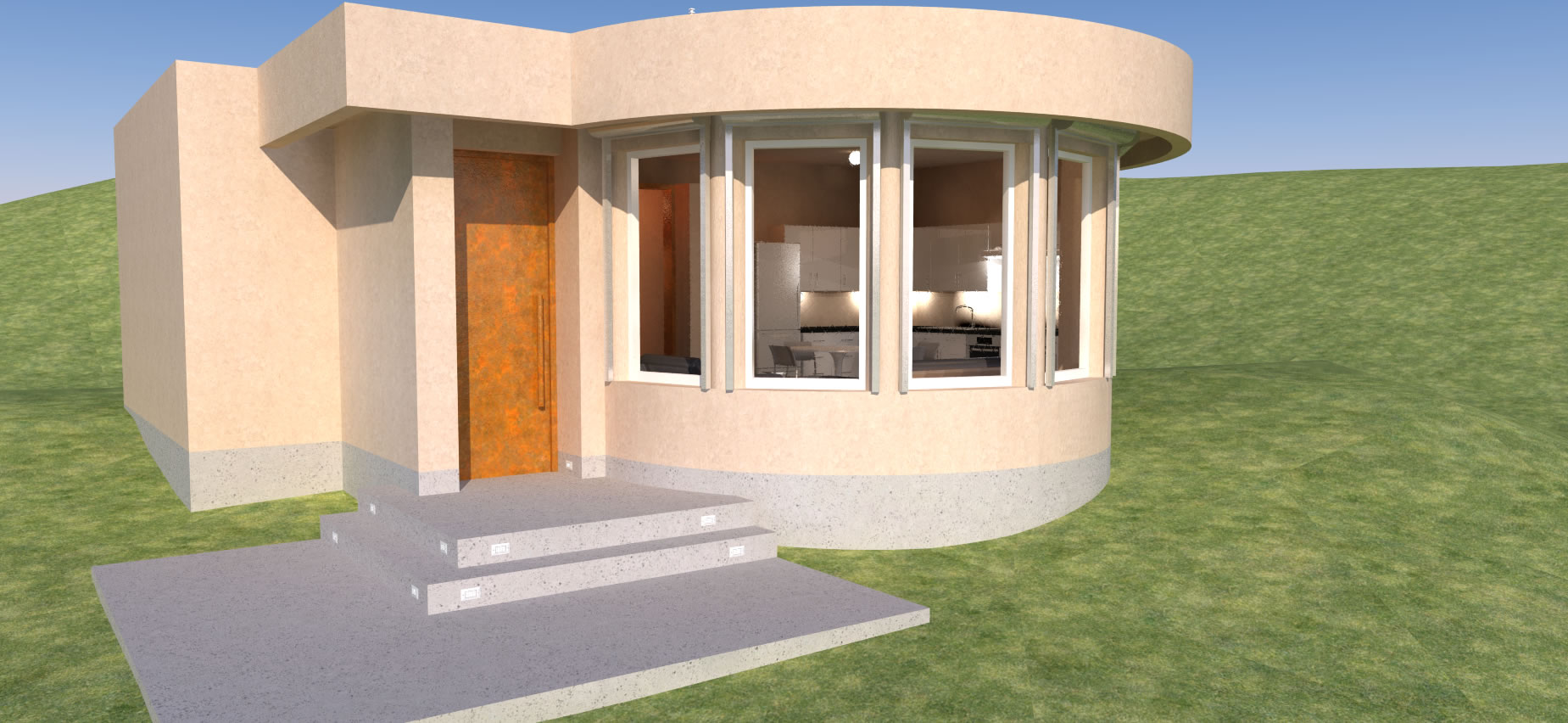
I’ve got a hobby – a weird one – and its the study of fallout shelters and nuclear war survival. I’m Gen-X and grew up during the cold war. So for fun – and maybe as a weird sort of therapy – I started learning about fallout and nuclear war as a teenager.
I’m also an optimist, so went into the study of nuclear war with the hope of finding an answer other than doom. I’ve written about it before and posted tiny fallout shelter designs but today I thought I’d share the basics of nuclear war survival and shelter design – and a small home that would function nicely as a fallout shelter.
The most important thing you should know is that nuclear war is totally survivable. Hollywood disagrees – but once you learn a few facts about the fallout from a nuclear bombs you’ll see what I mean.
- The fallout from a nuclear bomb has an incredible short half-life. Within 30 days the radiation is essentially gone – except for a few long living isotopes (variations of strontium and iodine) that will continue to show up for years in certain foods (like milk). Most of the material caught-up in a nuclear blast is not naturally radioactive, so it’s temporary charge is very short lived. You can measure the half-life of fallout in hours, not years. For each factor of seven increase in time, the radiation from fallout is reduced by a factor of ten. In other words, 7 hours after the blast the radioactivity of the fallout has dropped by a factor of 10. 49 hours later it’s dropped by a factor of 100. After two weeks you can leave your shelter for short visits. After 28 days, the radiation is so low you can leave the fallout shelter permanently. For more information, get the essential book on the topic, Nuclear War Survival Skills.
- 3-feet of dirt (or 2-feet of concrete) is all that’s needed to shield you from nuclear fallout radiation. Gamma radiation penetrates all materials, but is slowed by dense material. Just 3-feet of dirt can cut the radiation from the fallout immediately following the blast to safe levels. In other words, the more mass you can put around you, the better.
- Nuclear bombs are primarily blast weapons, the radiation is a side effect. So if you’re outside the blast zone you have a great chance of survival if you have a shelter, water, and food – in that order. The same is not true of nuclear reactor accidents – which confuses the topic. nuclear reactor sites literally have tons of highly radioactive material, so those accidents cause very long lasting radioactive dangers – totally unlike nuclear weapons blasts.
It’s impossible to determine what kind of nuclear war could possibly happen (isolated, limited, global), but even in an all-out global nuclear war, the people that have build shelters and stored away food and water will survive – like our government.
In the event of a limited nuclear war – like if North Korea decides to use their small (by comparison) weapons against their enemies (mainly the USA) then the survival rate is exponentially better.
Fallout Shelter Essentials
There are a few things fallout shelter should have, and most are pictured above.
- Thick walls and roof – or underground at least 3-feet. The entry should also have a right-angle since gamma radiation doesn’t turn corners. Learn more about Fallout Shelters.
- Ventilation and some kind of filter. Learn about the simplest fallout shelter air filter – the Kearney Air Pump.
- Water Storage. Keep at least 1 gallon of water per person per day. Also have a good water filter for filtering water after you run out.
- Food Storage. Freeze dried food seems like the most practical since it has a very long shelf life and only needs hot water to prepare.
- Fuel to boil water. Denatured alcohol is one of the safest fuels to use inside a shelter, so an alcohol stove might be best for boiling water.
- A geiger counter. Knowing how much radiation is actually present is essential for determining when it is safe to exit the shelter. A refurbished and recalibrated cold war geiger counter works great!
- A radio to stay informed. Store the radio in a simple faraday cage (double cardboard box lined with aluminum foil) to prevent damage in case of electromagnetic pulse.
- Self defense plan. Since the rule of law may be less than ideal after any major event, you may be called upon by circumstance to defend yourself. Pick the tools you are most comfortable using in this regard.
- A simple Toilet. A sawdust toilet – like most tiny houses use – is ideal for a fallout shelter. As long as you keep the pee and poo separate and the poo covered with sawdust, you’re living environment will not get stinky. Learn more about the Lovable Loo.
- A shower to rinse off any fallout if you should go outside.
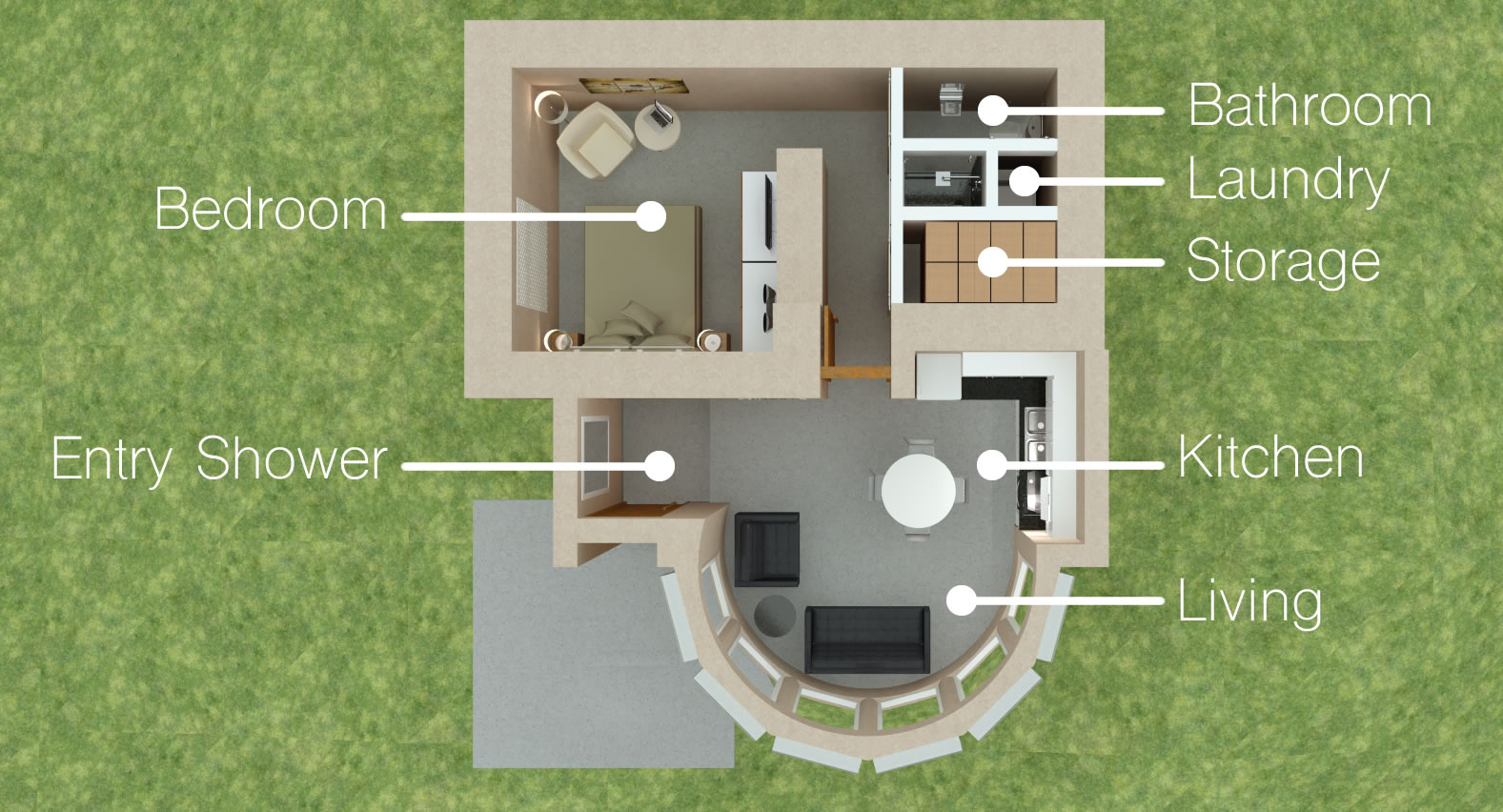
In the design pictured here I show a simple concrete home. It’s assumed that this house is located outside the blast zone. The main room with the windows would not be habitable right after the blast because the walls are only 1-foot thick and the windows block virtually no radiation. But the bedroom, bathroom and storage closet are well insulated (except for the hallway). Yes it’s true that the quick trip across the hall to the bathroom would expose you to radiation, it would be such a quick dash the exposure would be nominal.
The water for this house would be stored in large underground storage tanks behind the house. A well or rainwater collection could be used to fill the tanks – but a shutoff would need to be used after a blast to keep the stored water fallout free.
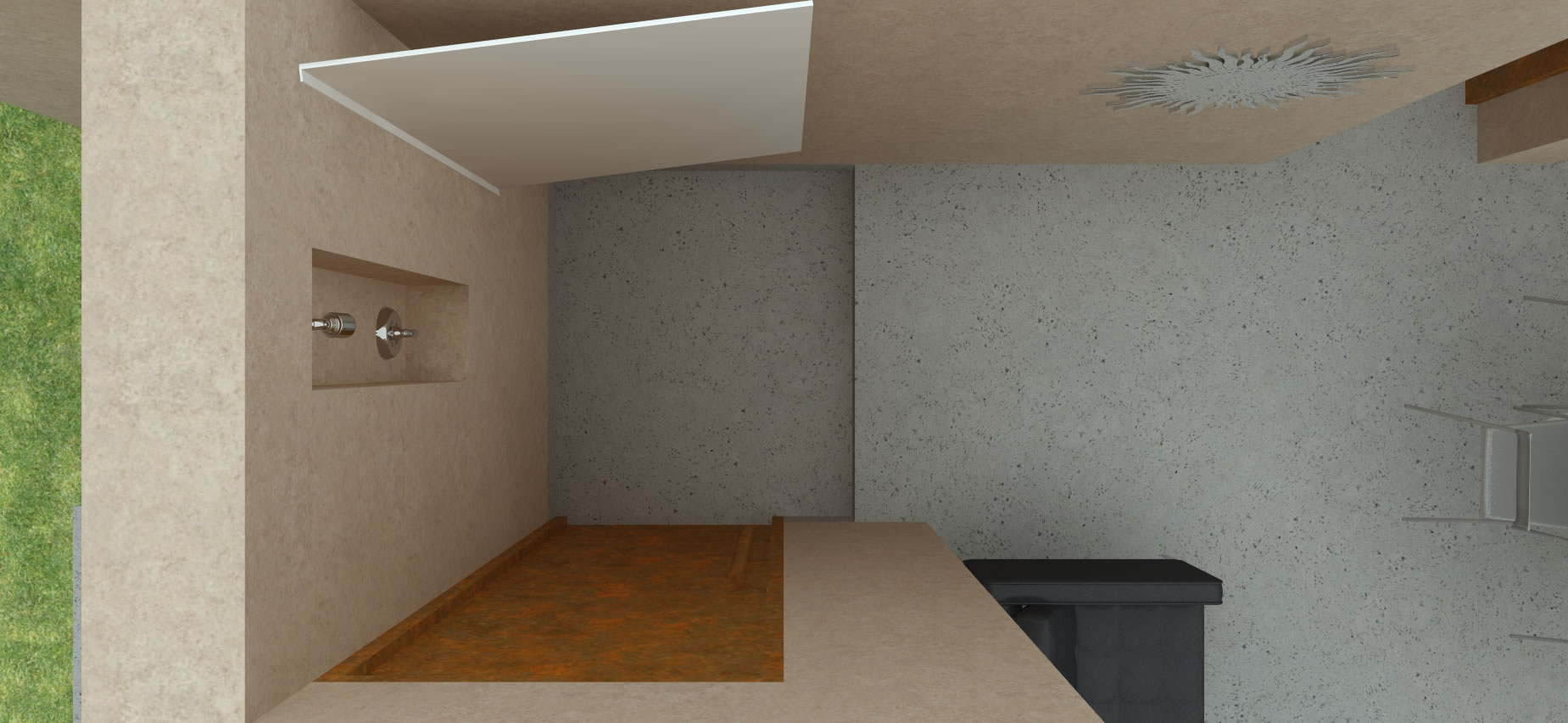
In the entryway of the is a hidden shower, so that if you needed to go outside before the fist 30 days were over, you could wash off any fallout before entering the shelter part of the home.
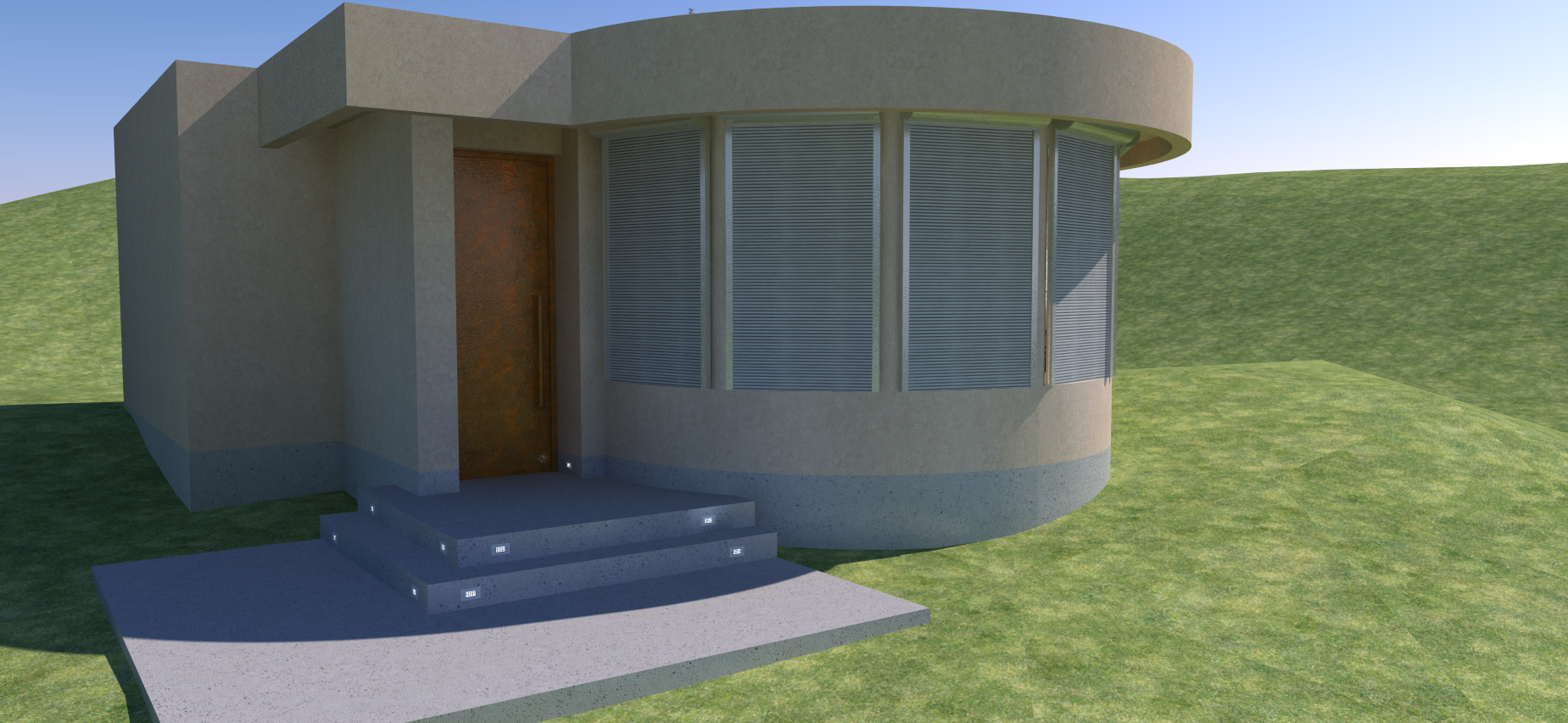
The big windows in the front of the house would also have roll-up security shutters to keep the house secure during a disaster and while you were away.
The following images show how normal this house could look, while still being ready for the worst case scenario.
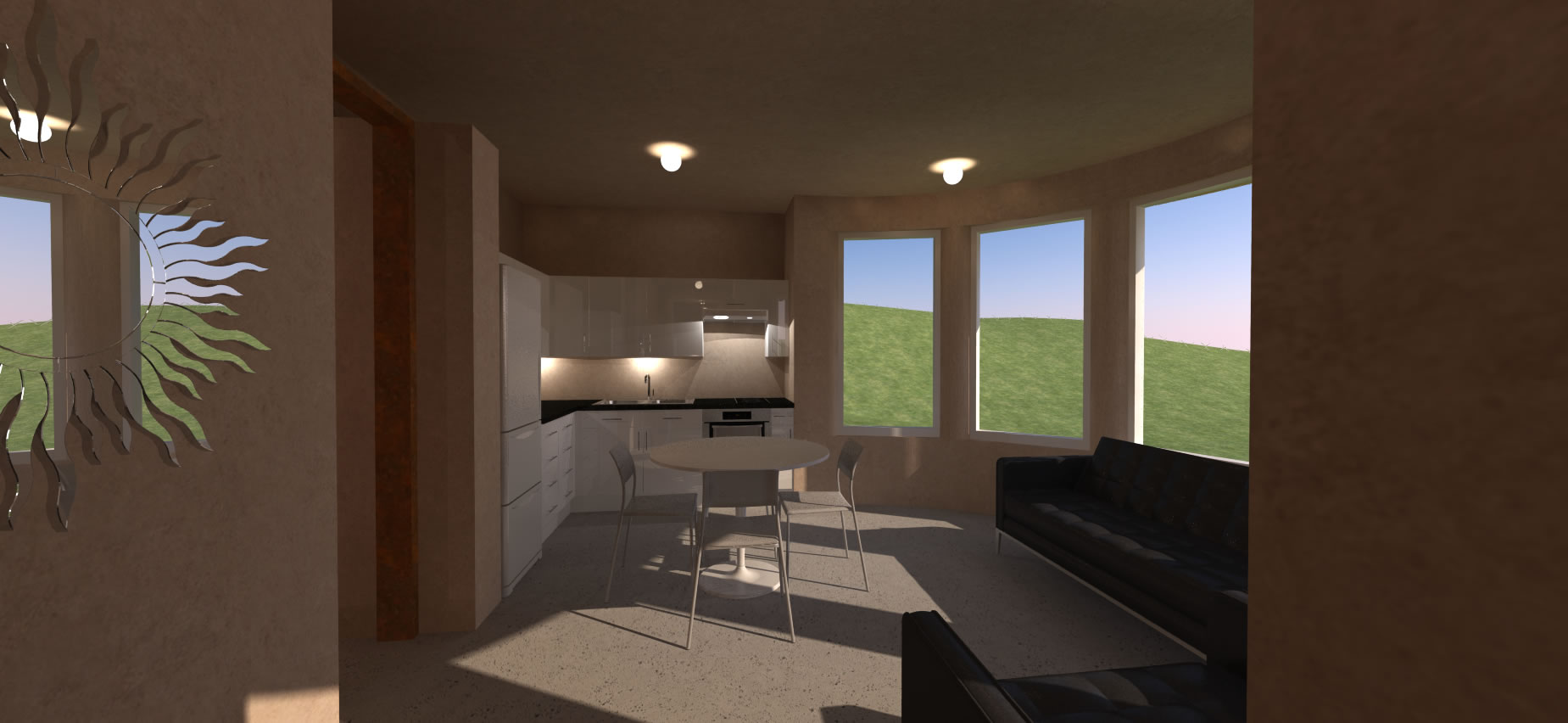
View from just inside the front door. The entry showered is hidden behind a mirror so your friends don’t think you’re crazy.
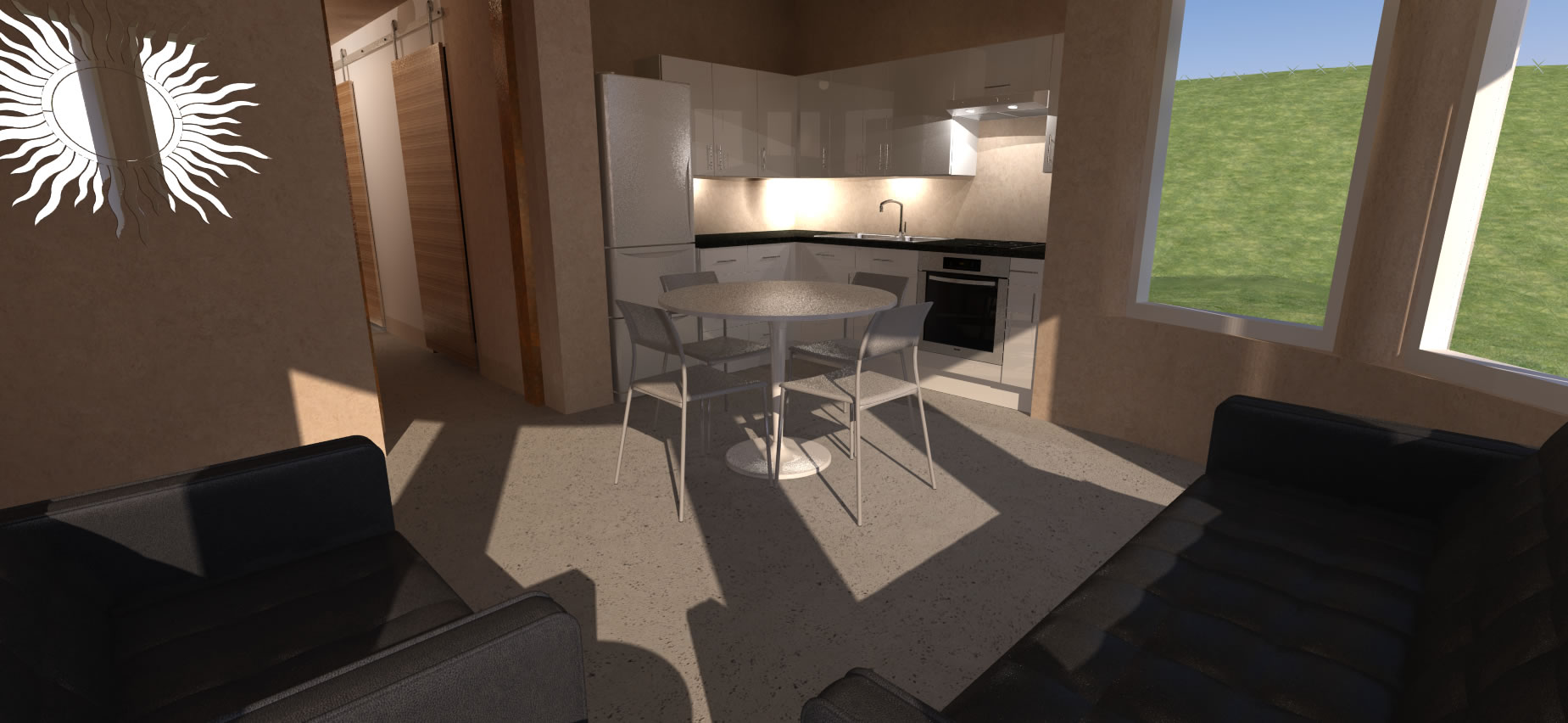
The kitchen is tucked into a corner.
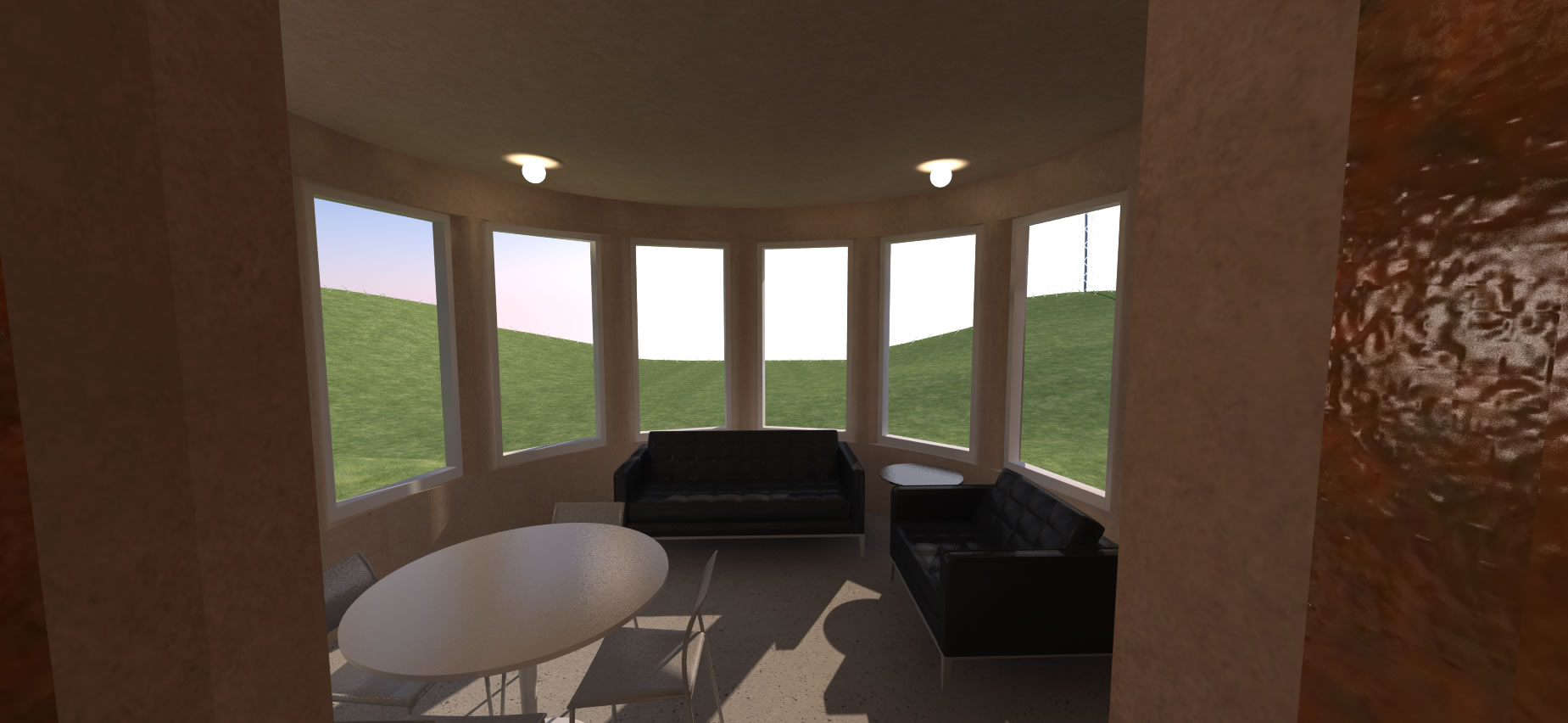
The living room is a simple semi-circle.
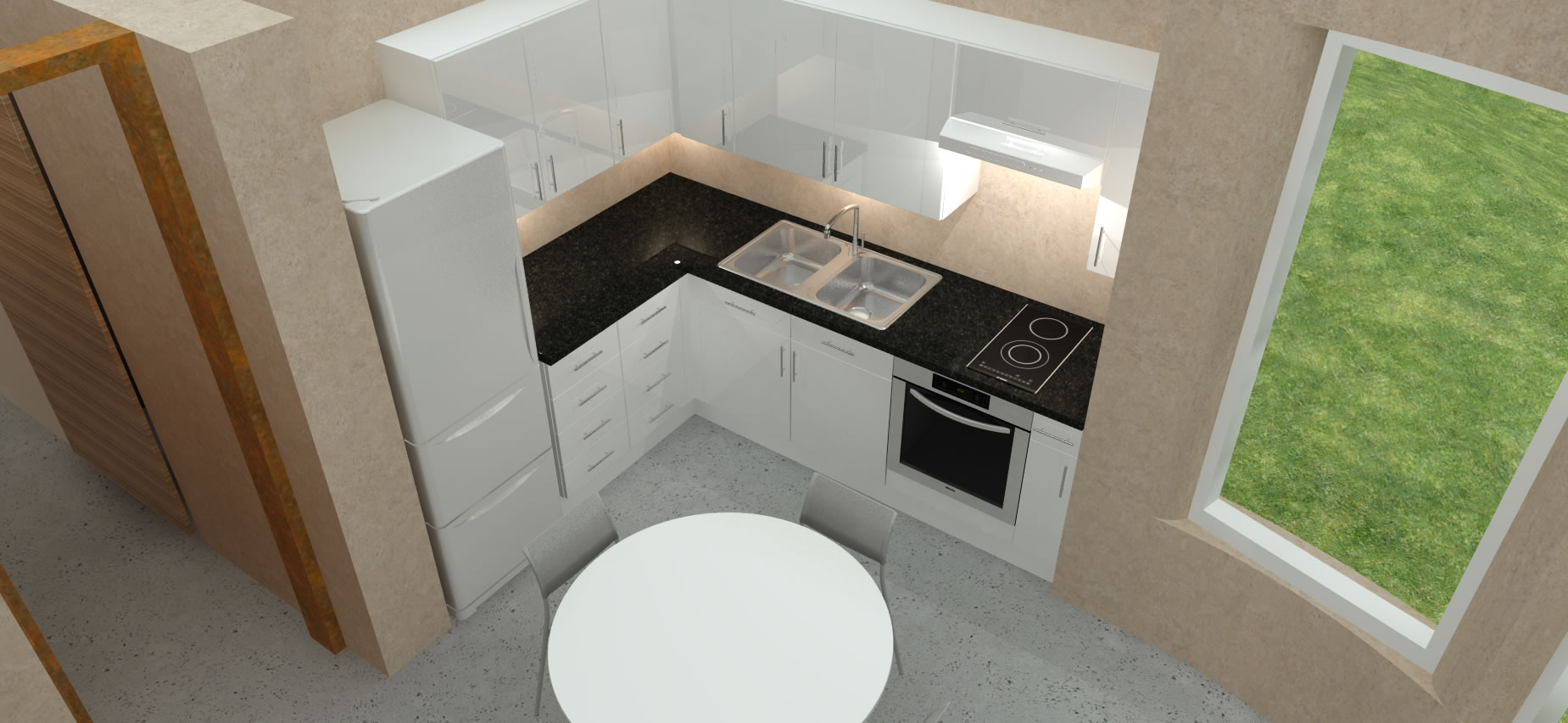
A better look at the kitchen.
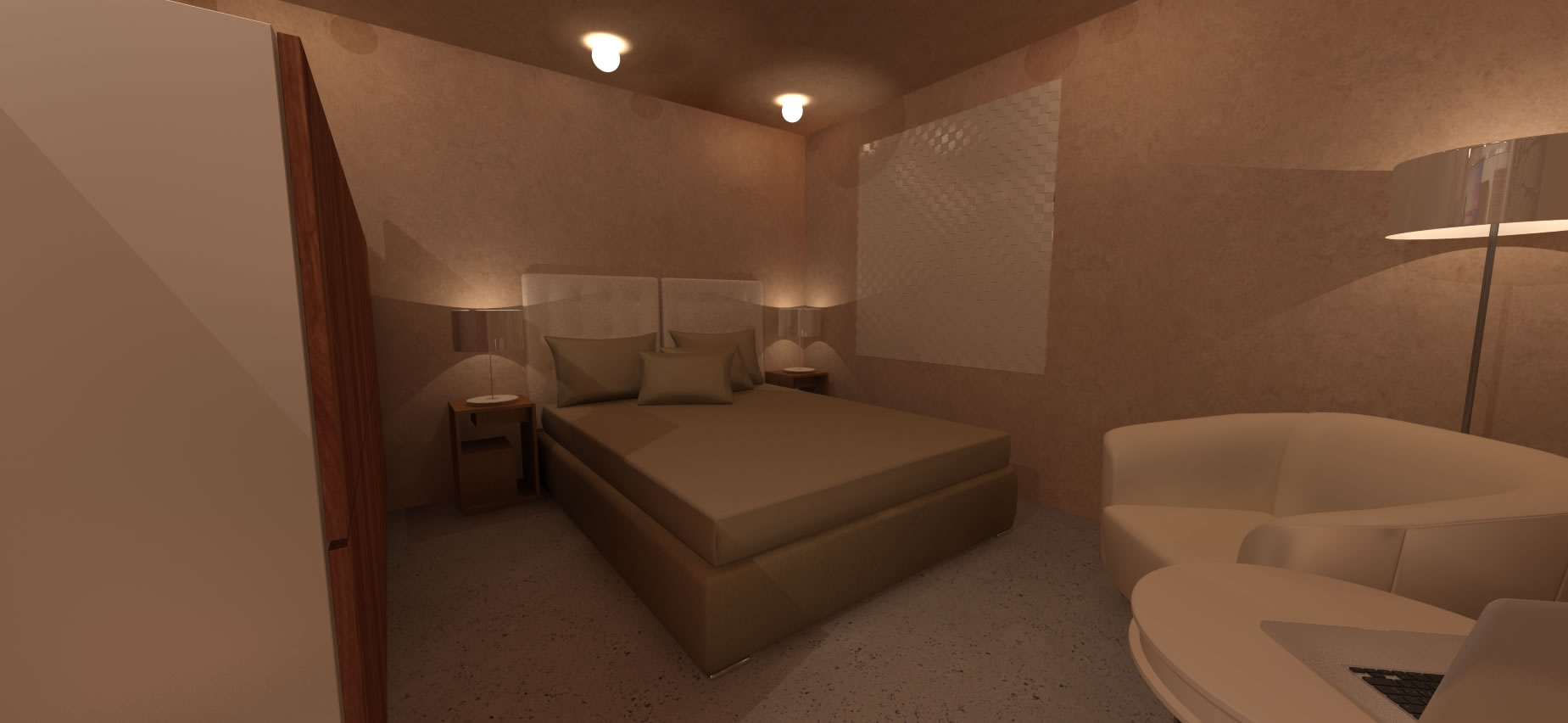
The only weird thing about the bedroom is that there are no windows. To help avoid issues with fire codes, nothing in the structure can burn, plus the room has no doors and is open to the bathroom. The bathroom and storage closed doors are barn doors – not true swinging doors.
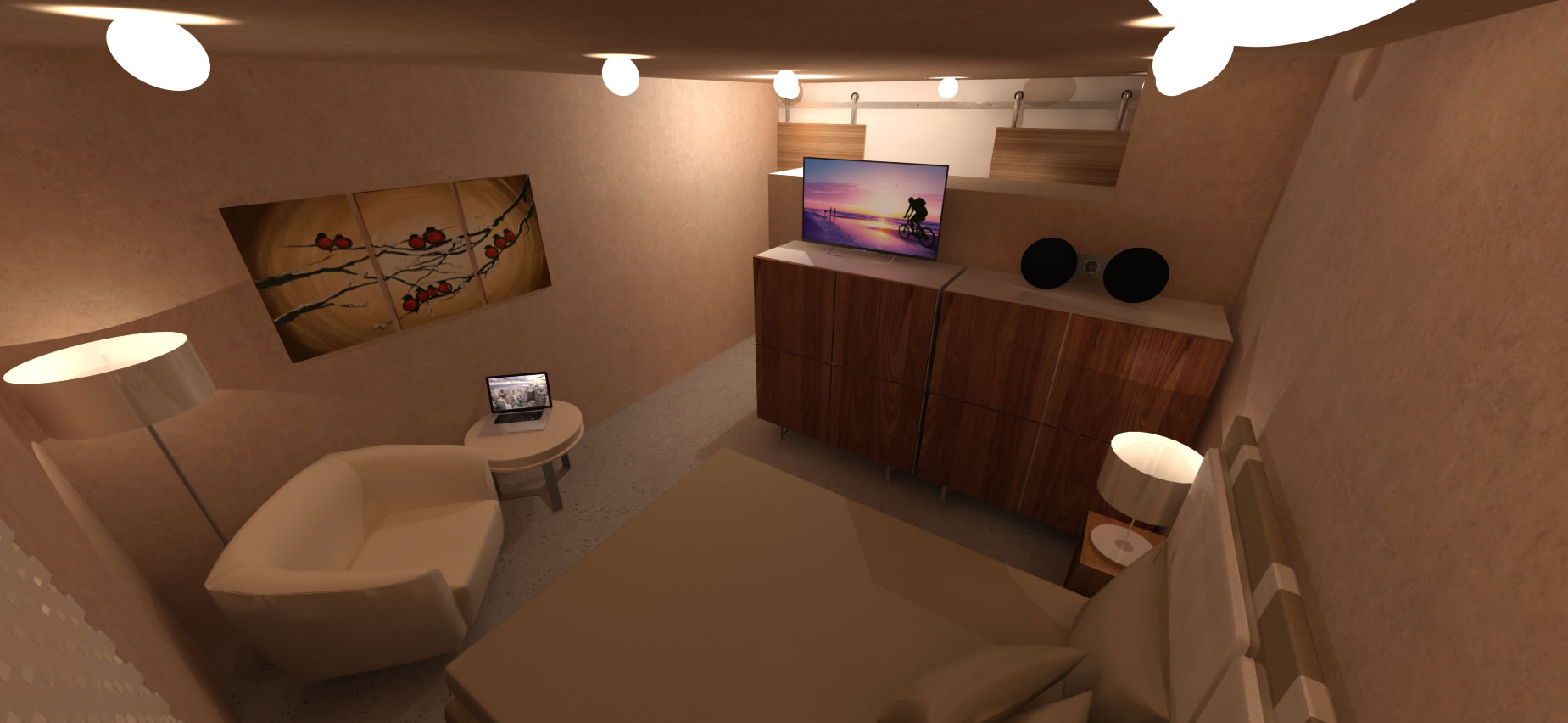
The bedroom and bathroom is where you’d spend your time after a nuclear war – waiting out the fallout. The two foot walls and roof keep the radiation out.
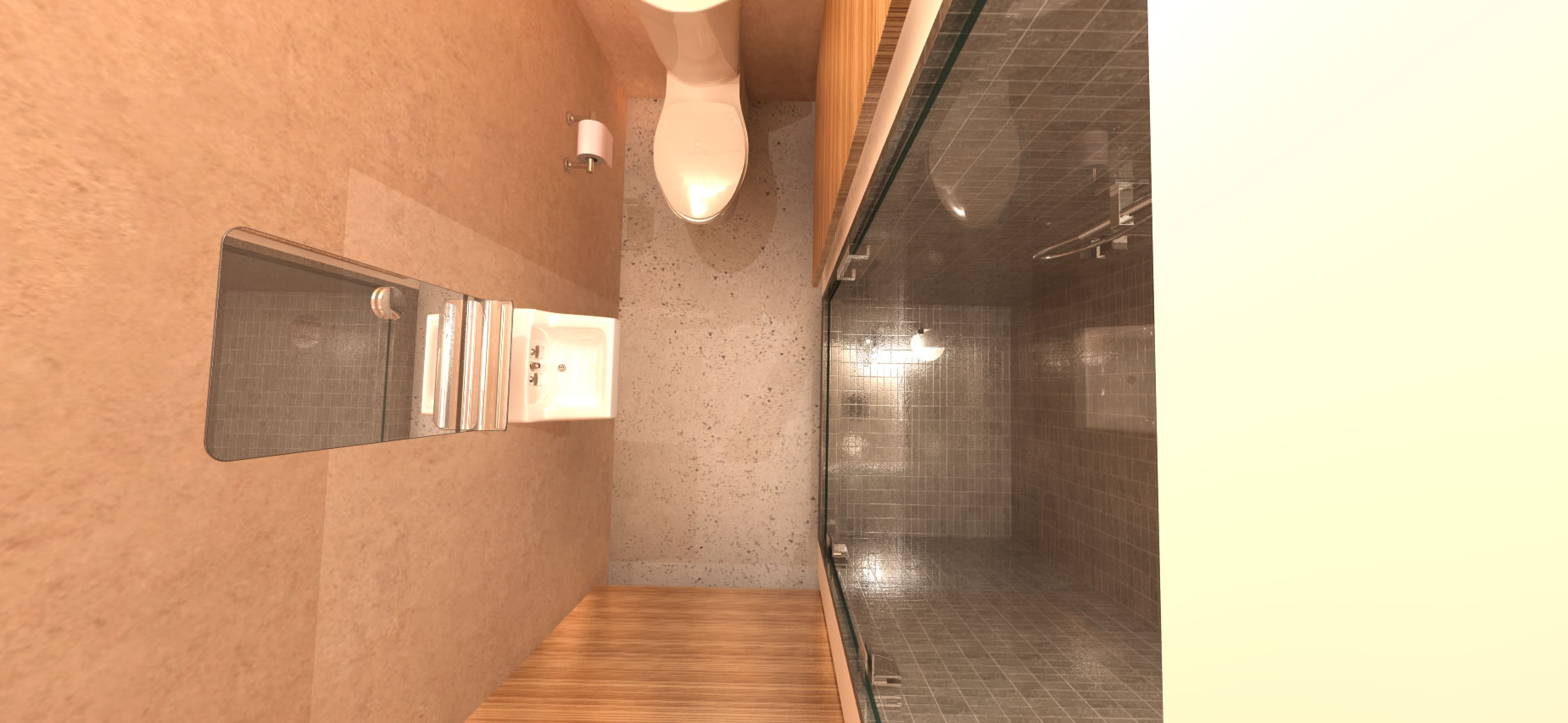
Here’s a shot of the bathroom. It’s tiny and simple. A combo washer/dryer unit hides behind the barn door next to the toilet.
So now you can have your cake and eat it too… after a nuclear war. You’ve got a house with massive thermal mass during peace times – which regulates it’s own temperature perfectly, and you’ve got a place to hide out in a worst case scenario. Talk about home security!
Questions, comments? Post them below. I’m a geek on this topic and if I don’t know the answer I can point you in the right direction.
UPDATE: A few folks have asked for plans. Since a structure like this would be subject to local building codes and zoning I wasn’t planning on making a full set of plans… but I’m happy to share more details and dimensions. If you want to build something like this I suggest finding a local contractor that specializes in concrete and show them these drawings. You might find that they can fill in all the gaps and details and build it for you.
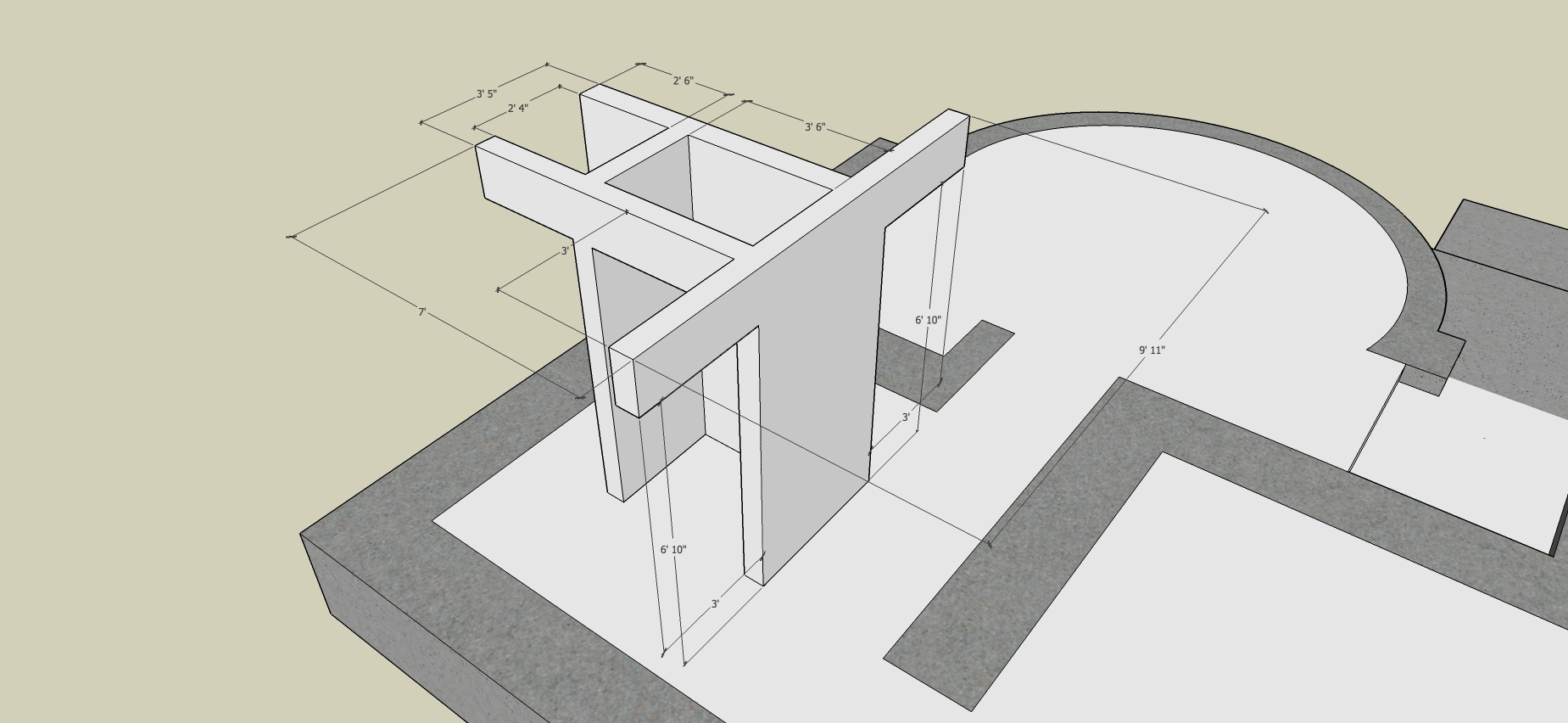
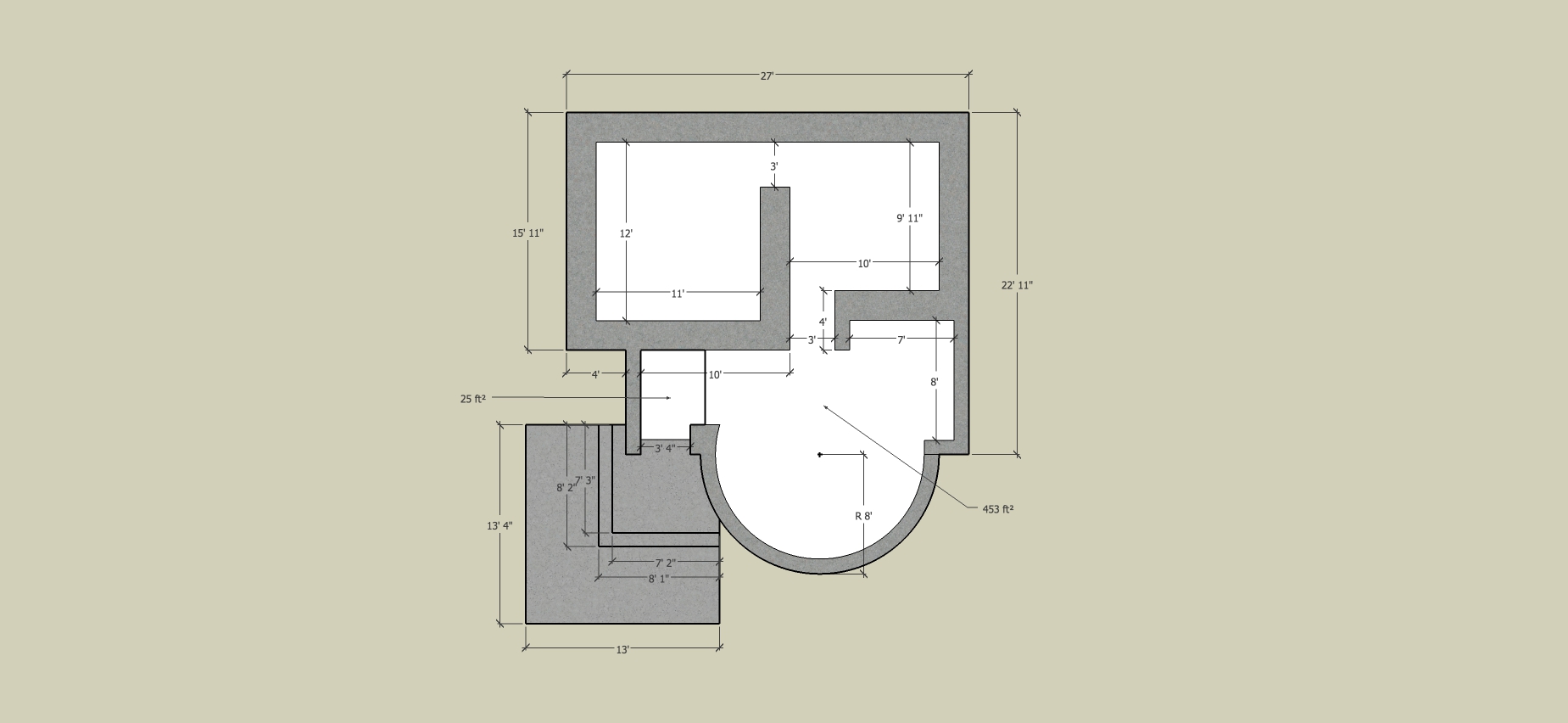
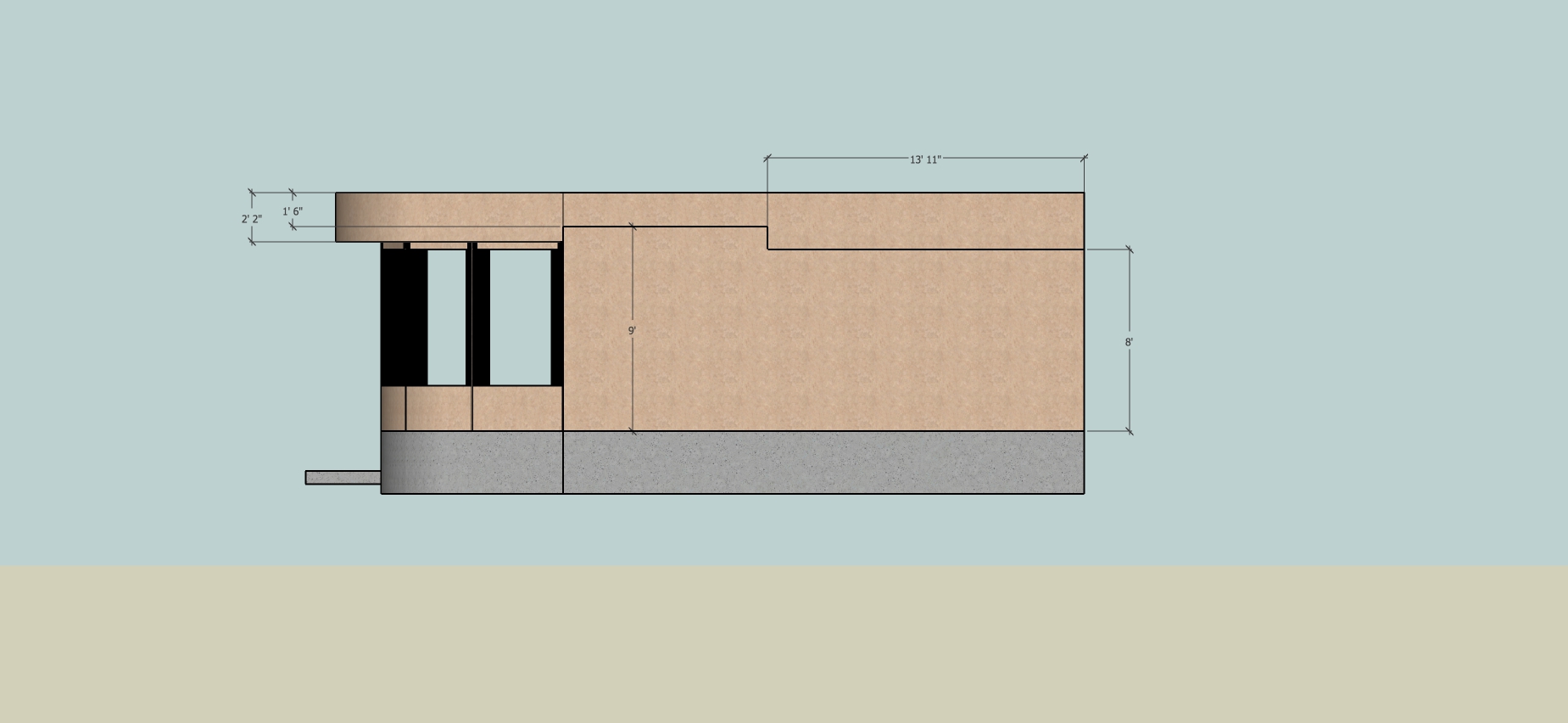
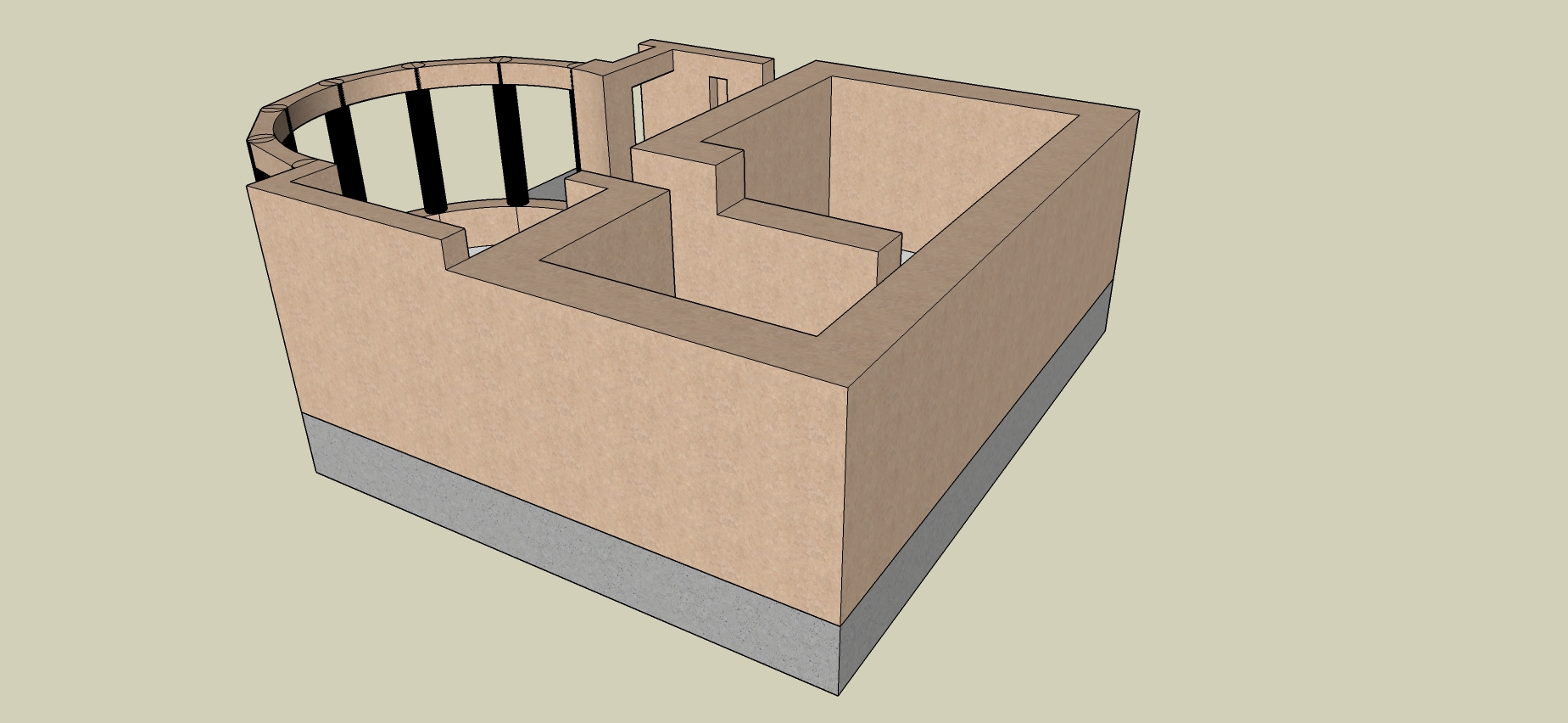

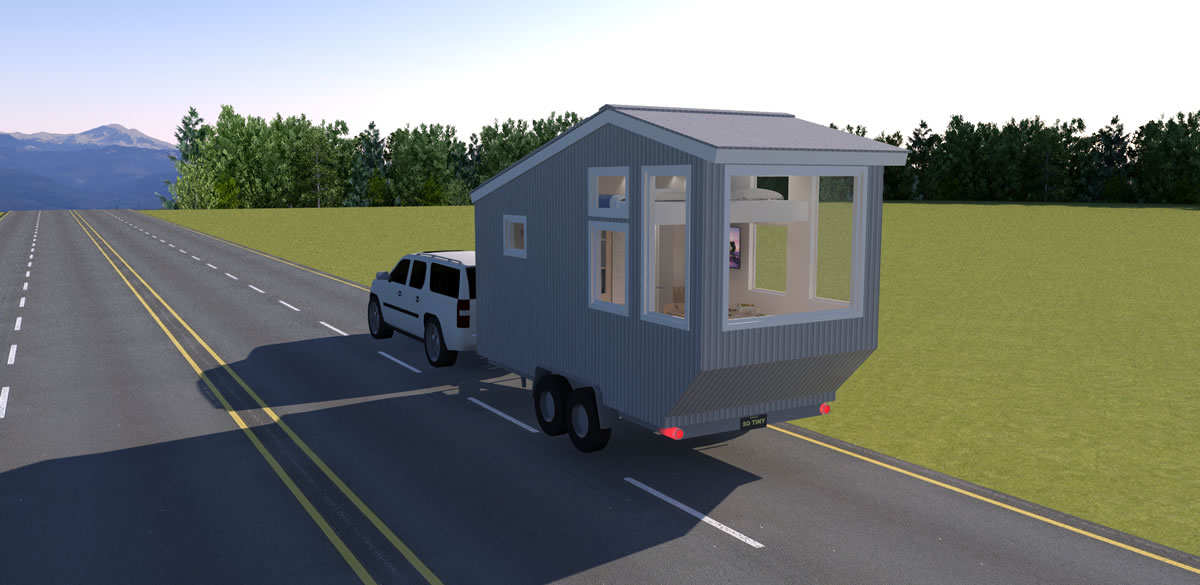
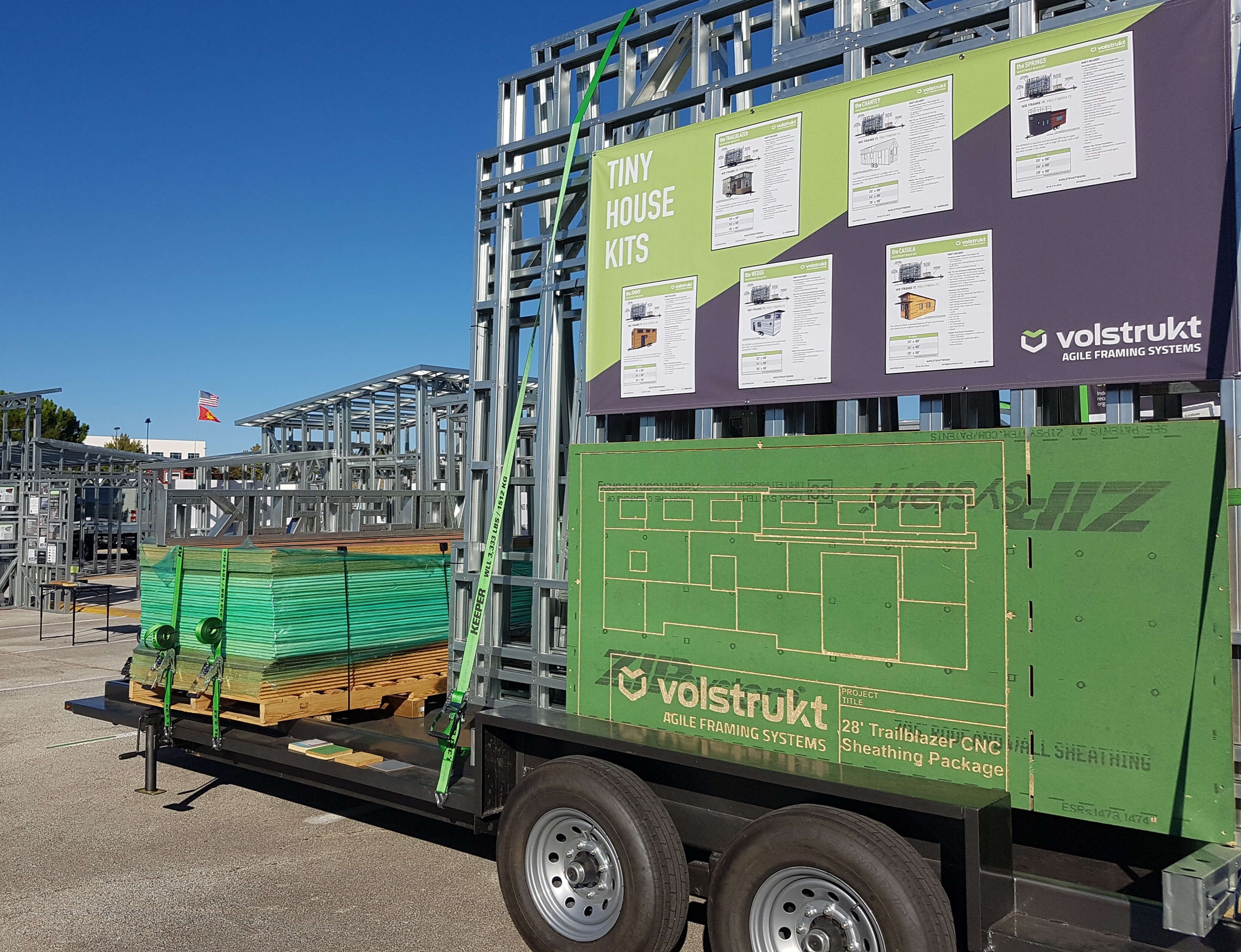
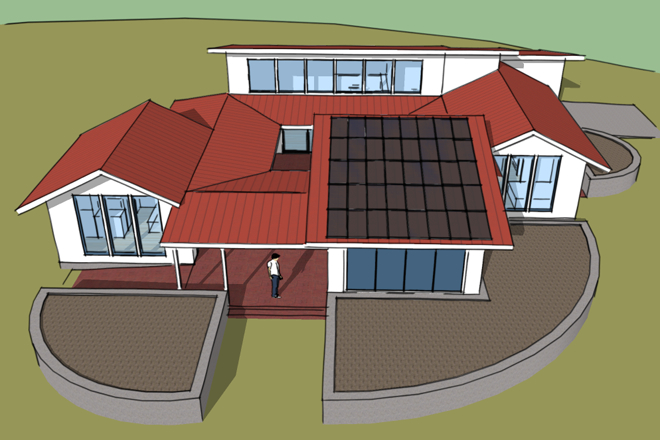
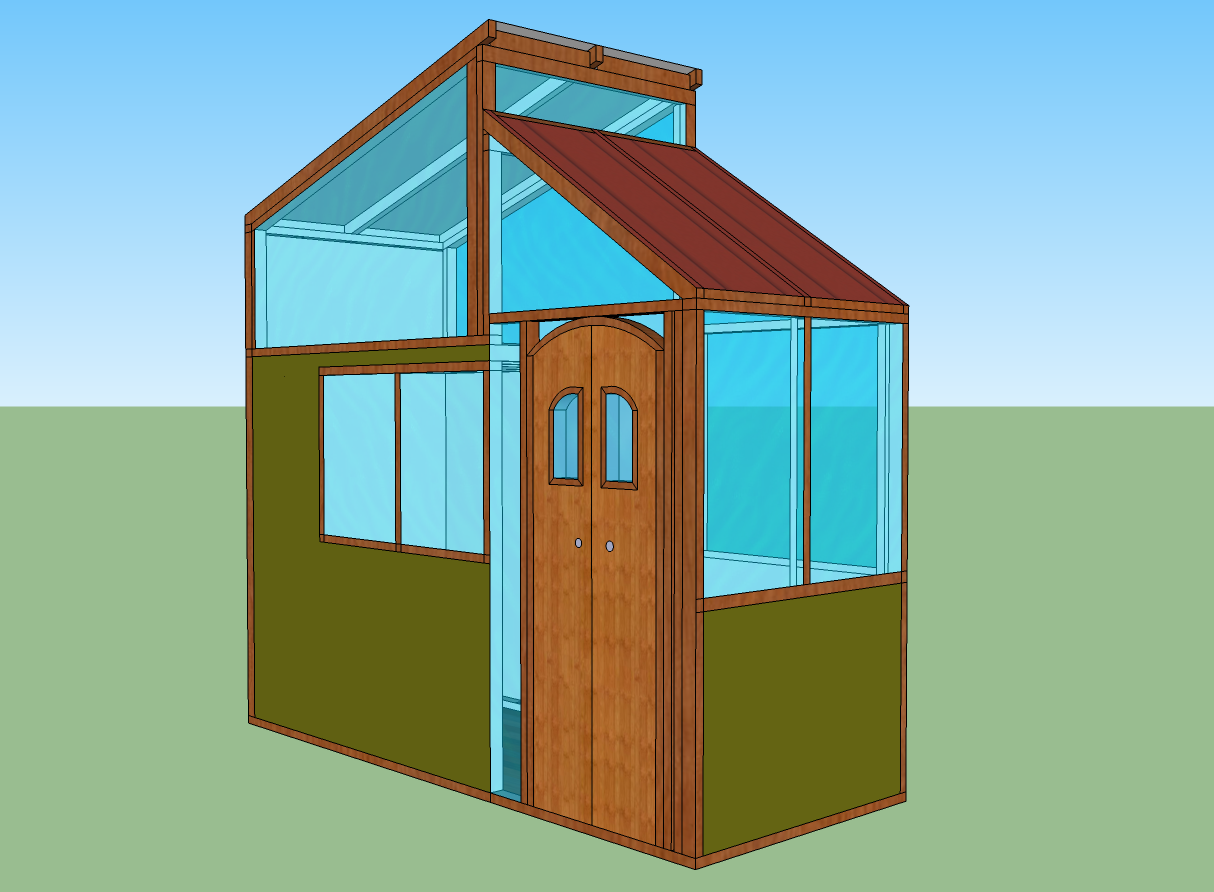
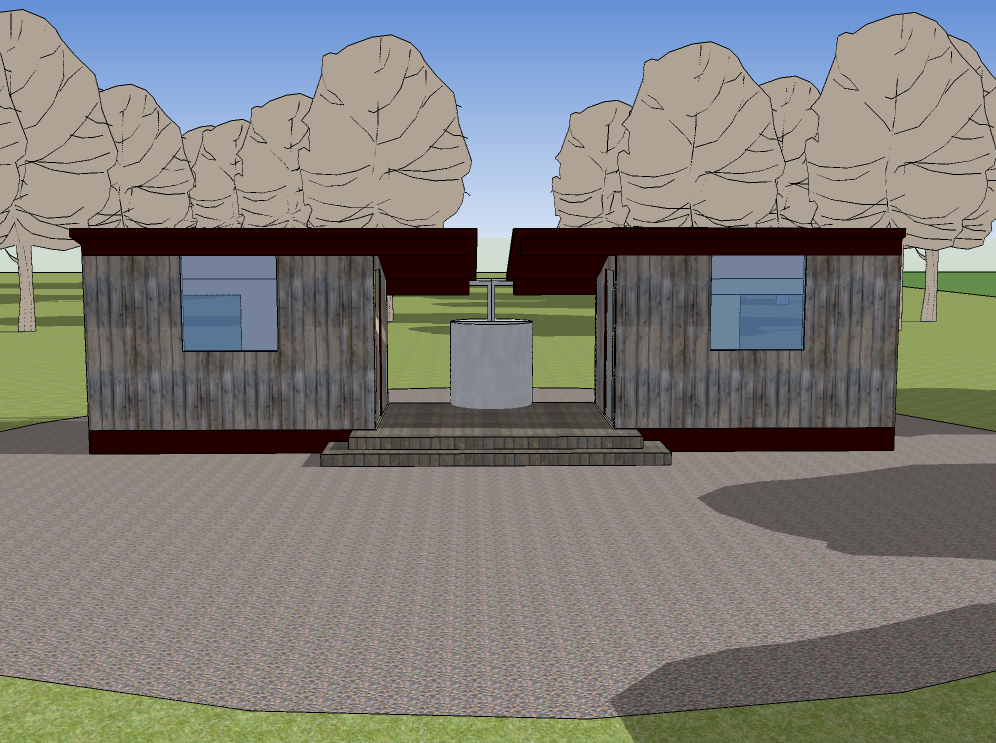
How do we get the plans for this unit?
Hi Katherine. I wasn’t planning on making plans, but just added an update with some measured drawings. If you wanted to build something like this I think the best way to do it would be to find a local contractor that specializes in concrete and show them the drawings. They may be able to build it for you.
I’m sure I can help…www.southernstructures.org
ICFs are a great idea as long as the wall has 2-feet of solid concrete.
Are you expecting the occupants of this shelter would go here before the nuclear blast? If this true, then wouldn’t it be helpful to have a shielded door at the beginning of the hallway to protect the hallway while you wait for the radiation to subside. If they go here after the blast would they have to shower when they went in the door and again when they got to the bedroom?
I’m not thinking blast shelter… that door would need to be much more stout. I’m thinking this is a house with a dual function – livable home + radiation protection.
I love this design! It’s attractive and quite livable. I prefer living in small spaces, always have.
Probably make a good storm shelter too as long as it was up above any flood danger. You could add a root cellar underneath for extra food and supply storage, maybe an extra secret hidey hole. Definitely need a lot of water storage.
With the roll-up shutters, couldn’t they be made with lead or some material that would provide a shield from radiation? Or even the same for the hallway?
Mary, those shutters would weigh several hundred pounds each!
I absolutely love the design as a small home. I love the idea of a hidden shower in the entry- I could totally use that with four kids who love playing in mud. 😉
we can provide many types block machine and brick machine.we also can provide soil interlocking brick machine.
http://www.plymachinery.com
[email protected]
whatsapp;008613153926307
How about an estimated price?